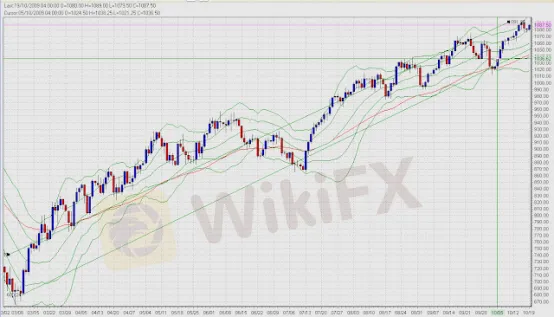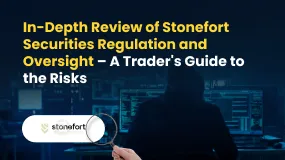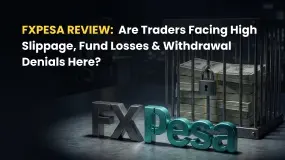简体中文
繁體中文
English
Pусский
日本語
ภาษาไทย
Tiếng Việt
Bahasa Indonesia
Español
हिन्दी
Filippiiniläinen
Français
Deutsch
Português
Türkçe
한국어
العربية
Trading and Investment Strategies for the S&P 500 Index
Abstract:The S&P 500 Index is the largest and most successful stock market index in the world, and it can be traded through major Forex and CFD firms. In this post, I'll show you how to trade the S&P 500 Index, why it can be such a profitable investment, and the most effective strategies individual traders may employ to do so.

What exactly is the S&P 500 Index?
The S&P 500 Index is a stock market index that includes the 500 largest publicly listed firms in the United States. The index is weighted based on the market capitalizations of its constituent businesses, essentially reflecting the market worth of American large business. For example, if business A has one million shares issued at $1 each and company B has one million shares issued at $2 each, the price change of company B's share will contribute twice as much to the changing value of the index as the price change of company A's.
Because the United States has been the world's largest and most powerful economy for over a century, its stock market has piqued the curiosity of foreign investors, particularly since the 1970s deregulations made retail international investing more accessible.
Why Should I Care About the S&P 500 Index?
The S&P 500 Index is more interesting to investors and traders around the world than any other stock market index, except perhaps the NASDAQ 100, the major American technology index, because it is a very broad index that represents the leading lights of the world's largest and most successful economy.
We can see that stock market indexes, in general, and the S&P 500 Index in particular, have a “long bias,” which means that their values tend to climb over time. This is in contrast to Forex, another asset class available for trading through most retail brokerages, which has no directional bias. That implies that even something as basic as trading the S&P 500 long might provide traders a statistically beneficial edge. Building a lucrative edge in Forex or commodities needs a lot more effort.
The S&P 500 Index may be traded inexpensively and reliably at practically every major Forex brokerage that also provides CFDs. Why wouldn't traders and investors from all over the world be interested in something with such a strong long-term track record?
What Are My Options for Investing in the S&P 500 Index?
Because investing often entails purchasing and keeping an asset for months or years, it's critical to use a vehicle that doesn't charge periodic holding expenses, while spread and commission aren't as crucial. That implies that if you want to invest in the S&P 500, you should avoid using brokerage CFDs since they nearly always create an overnight swap charge everyday, which eats into long-term earnings. Furthermore, buying a weighted sample of all 500 shares, as would be necessary to duplicate the index, is unfeasible and expensive for ordinary investors.
What Are My Options for Investing in the S&P 500 Index?
Investing in exchange traded funds (ETFs), which closely track the performance of the S&P 500 Index, is a practical alternative for investors. These ETFs possess a big percentage of the 500 firms that make up the index. Due to the expenses of purchasing and selling the shares they must possess, as well as other essential administration, ETFs nearly always underperform the Index, but they are certainly the best alternative for ordinary investors.
Some of the most popular ETFs tracking the S&P 500 Index which can be found at major stockbrokers are:
SPDR S&P 500 ETF (NYSEARCA:SPY)
SPDR PORTFOLIO S&P 500 ETF (NYSEARCA:SPLG)
VANGUARD S&P 500 ETF (NYSEARCA:VOO)
iSHARES CORE S&P 500 ETF (NYSEARCA:IVV)
What Are My Options for Investing in the S&P 500 Index?
What is the best way to trade the S&P 500 Index?
Traders seeking to benefit from several short-term long or short positions in the S&P 500 Index are considerably more interested in accessing an asset that is liquid and often offers competitive spreads and commissions. Longer-term expenses of maintaining holdings, such as overnight financing fees known as “swaps,” become less relevant.
Trading the S&P 500 Index as a CFD is the most convenient option for most retail traders. Many Forex firms, fortunately, provide CFD trading in stock market indexes.
Traders with higher deposits may be able to receive a better bargain by trading futures or options contracts, such as the e-mini S&P 500 futures or options, rather than CFDs. The tick size of the e-mini S&P 500 futures contract is $12.50, which means the smallest position you may take has a notional value of around half a million dollars, which is much too huge for many traders. Fortunately, a new S&P 500 futures contract has been available since 2019: the e-micro S&P 500 futures contract, which has a tick size of only $1.25, making it feasible to initiate a position with a nominal value as little as $50,000.
Traders do not need to choose stocks to benefit from the stock market; instead, they may trade broad market indexes like the S&P 500 to diversify market risk while still being exposed to the tremendous upside observed in recent years and decades. Now that the majority of Forex brokers provide trading in the S&P 500, the world's largest and best-performing index, retail traders may take advantage of the chance. Trading short should be done with great caution, if at all, given the Index's recent long tilt. Long after negative retracements on the daily chart begin to turn around, traders have earned a lot of money trading the Index.

Disclaimer:
The views in this article only represent the author's personal views, and do not constitute investment advice on this platform. This platform does not guarantee the accuracy, completeness and timeliness of the information in the article, and will not be liable for any loss caused by the use of or reliance on the information in the article.
Read more

In-Depth Uniglobe Markets Commission Fees and Spreads Analysis – What Traders Should Really Know
For experienced traders, the cost of execution is a critical factor in broker selection. Low spreads, fair commissions, and transparent pricing can be the difference between a profitable and a losing strategy over the long term. This has led many to scrutinize the offerings of brokers like Uniglobe Markets, which presents a tiered account structure promising competitive conditions. However, a professional evaluation demands more than a surface-level look at marketing claims. It requires a deep, data-driven analysis of the real trading costs, set against the backdrop of the broker's operational integrity and safety. This comprehensive Uniglobe Markets commission fees and spreads analysis will deconstruct the broker's pricing model, examining its account types, typical spreads, commission policies, and potential ancillary costs. Using data primarily sourced from the global broker inquiry platform WikiFX, we will provide a clear-eyed view of the Uniglobe Markets spreads commissions prici

In-Depth Review of Stonefort Securities Regulation and Oversight – A Trader's Guide to the Risks
For experienced traders, the process of selecting a new broker transcends a simple comparison of spreads and leverage. It is a meticulous due diligence exercise where the integrity of the broker's regulatory framework is paramount. Stonefort Securities, a relatively new entrant in the crowded brokerage space, presents a complex and often contradictory profile. On one hand, it boasts a modern MT5 platform and a stream of positive user testimonials. On the other hand, it is shadowed by severe regulatory warnings that question the very foundation of its operations. This in-depth review focuses on the core issue for any long-term trader: Stonefort Securities regulation and oversight. We will dissect the broker's corporate structure, scrutinize its licensing claims, and analyze what the data implies for trader protection and fund security. For traders evaluating whether Stonefort Securities is a trustworthy partner, understanding these details is not just important—it is essential.

FXPesa Review: Are Traders Facing High Slippage, Fund Losses & Withdrawal Denials?
Do FXPesa support officials fail to pick up your calls when you raise fund withdrawal requests with the broker? But are these officials always open to you regarding fund deposits? Do you frequently spot slippage and stop-loss order execution errors on the FXPesa login? These issues are increasingly becoming common with this forex broker. Consequently, many traders have expressed their dissatisfaction with the broker online. In this FXPesa Review article, we have shared some of these complaints. Take a look!

Seaprimecapitals Withdrawal Problems: A Complete Guide to Risks and User Experiences
Worries about Seaprimecapitals withdrawal problems and possible Seaprimecapitals withdrawal delay are important for any trader. Being able to get your money quickly and reliably is the foundation of trust between a trader and their broker. When questions come up about this basic process, it's important to look into what's causing them. This guide will tackle these concerns head-on, giving you a clear, fact-based look at Seaprimecapitals' withdrawal processes, user experiences, and trading conditions. Most importantly, we'll connect these real-world issues to the single most important factor behind them: whether the broker is properly regulated. Understanding this connection is key to figuring out the real risk to your capital and making a smart decision.
WikiFX Broker
Latest News
WikiFX's New Evaluation of ATM Capital LTD: Does its License Protect the Arab Investor?
How a Fake Moomoo Ad Led to the “New Dream Voyage 5” Scam
Is Axi Legit? A Data-Driven Analysis of Its Regulatory Standing and Trader Feedback
Trive Investigation: High Score, Hidden Risk - The Profit Paradox
In-Depth Uniglobe Markets Commission Fees and Spreads Analysis – What Traders Should Really Know
FXPesa Review: Are Traders Facing High Slippage, Fund Losses & Withdrawal Denials?
Bessent believes there won't be a recession in 2026 but says some sectors are challenged
Is GGCC Legit? A Data-Driven Analysis for Experienced Traders
Young Singaporean Trader Grew USD 52 into a USD 107,700 Portfolio
mBank Exposed: Top Reasons Why Customers are Giving Thumbs Down to This Bank
Currency Calculator



